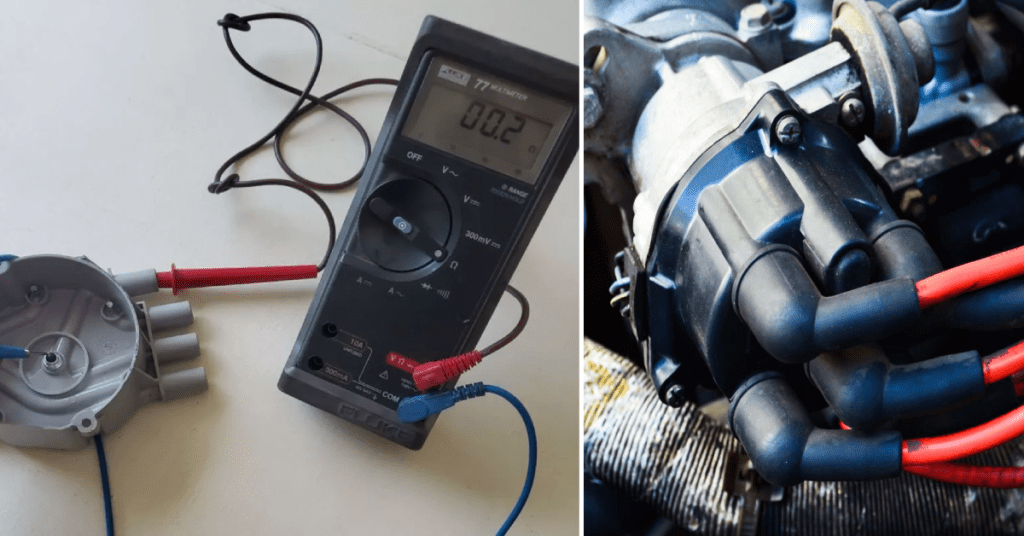How to Test Distributor Using Multimeter
For an engine to run smoothly, every component must work in harmony, and at the heart of your car’s ignition system lies one of the most critical parts the distributor. Whether you’re revamping an old car or maintaining a fleet of vehicles, understanding how to test a distributor is a skill that could save you both time and money.

In this extensive post, we’ll cover the basics and the nuances of how to test Distributor using Multimeter, providing a comprehensive resource for small business owners and entrepreneurs in the automotive industry. By the end of this piece, you’ll wield the knowledge needed to ensure optimal performance from your distributor and detect issues long before they become costly repairs.
Essential Tools for Distributor Testing
Carrying out effective distributor tests requires several tools. Here are the main ones you’ll need:
- Multimeter: This versatile tool measures voltage, current, and resistance. For distributor testing, you’ll primarily use the voltage and resistance settings.
- Timing Light: Essential for inspecting the engine’s timing, a timing light is particularly handy for checking the integrity of your distributor’s mechanical and ignition timing.
- Ohmmeter: For testing the resistance of the pickup coil inside the distributor.
- Test Bench or Professional Distributor Machine: Not a handheld tool, but invaluable for very specific tests such as checking the distributor’s rotation, dwell angle, and vacuum advance, which affect timing and firing sequences.
Ensuring that your tools are in good condition and that you understand their usage is crucial. Safety goggles are a must, as working around the ignition system can be hazardous.
Safety First Working with Ignition Systems
The distributor is the starting point of the high-energy circuit that ignites the engine’s air-fuel mixture. Here are safety measures that should be at the forefront of any distributor testing:
- Disconnect the Battery: Always start by disconnecting the battery’s negative terminal. This prevents accidental sparking that could cause harm to you or damage the vehicle’s electronics.
- Spark Protection: Use spark plugs or a discharger to prevent accidental flashes in the system.
- Fire Safety: Have a fire extinguisher nearby, and do not work with fuel around open flames, sparks, or cigarettes.
- Heat Protection: Some parts of the engine may be hot even after it’s turned off. Allow time for the engine to cool, or use protective gear to work around high-temperature components.
6 Easy Steps for Testing Procedures
Step 1: Checking for Power at the Distributor
Start by ensuring that the distributor is receiving power. With the ignition switch turned to the ‘on’ position, use the multimeter to check for voltage at the distributor’s wiring harness.
If there’s no power, the issue could be a faulty ignition switch, module, or wiring. These will need further diagnosis, which we’ll touch on in the ‘Advanced Testing Techniques’ section.
Step 2: Pickup Coil Resistance
The pickup coil signals the ignition module to create the spark. To check if it’s within the manufacturer’s specification, use an ohmmeter with the distributor disconnected. Compare the readings to your vehicle’s service manual, as they can vary widely between models.
Step 3: Cap and Rotor Examination
Remove the distributor cap and rotor to inspect for wear, carbon tracking, and corrosion. The rotor’s tip should be clean without any burned spots, and the cap’s terminals should all be intact.
Excessive wear indicates the need for replacement, as it can lead to misfires and poor engine performance. Modern distributors might not have these components, as they’re replaced with electronic sensors, but the same principle applies.
Step 4: Mechanical & Ignition Timing Verification
The mechanical advance in a distributor is comprised of springs and weights that work together to adjust timing based on engine RPM. You can test the mechanical timing using a timing light.
With the timing light attached to the number one spark plug wire and the engine running, you should see the timing marks line up with the indicator. Compare this to your manual’s specifications and adjust the distributor accordingly. Ignition timing that’s off can lead to poor performance, hard starting, and even engine damage.
Step 5: Vacuum Advance
For vehicles equipped with a vacuum advance, this mechanism fine-tunes timing in response to engine load. Disconnect, plug, and secure the vacuum line to test it using a vacuum pump and a multimeter set to measure dwell or timing. Again, compare readings to your service manual’s specifications.
Step 6: Distributor Shaft and Shaft End-Play
Worn shaft or end-play can cause erratic misfires or failure to start. With the distributor removed, check for play in the shaft and inspect the gear for teeth wear. A severely damaged gear or excessive play is a clear indication for replacement.
Advanced Testing Techniques
Testing Module, Coil, and Wires Separately
If the distributor components themselves check out, the problem might be with the coil, spark plug wires, or the ignition module. These parts are interconnected and need to be tested both independently and as a system.
The distributor’s timing and spark strength are controlled by the ignition module and coil. Using the multimeter to check their resistance can tell you if they’re damaged. Each manufacturer has their specifications, so make sure you reference the manual.
Testing the Rotor Arm
If your rotor arm spins when you crank the engine but stops when you turn it off, it could be loose or damaged. In some cases, the rotor arm and shaft can get out of alignment, causing no spark to the spark plugs.
Integrated Coil-In-Cap Distributors
Modern vehicles often house ignition coils inside the distributor. Testing these types of distributors requires additional precautions, as they can be more challenging to access and diagnose.
Integrated coils can be checked for primary and secondary resistance, and some may even have diagnostic trouble codes that can be read using a scan tool.
Interpreting Test Results
Understanding how to interpret the results is just as important as conducting the tests. For each component, knowing whether the readings fall within acceptable ranges as outlined by the manufacturer’s specifications is key. Here are some general rules:
- Voltage and Resistance: Any values significantly higher or lower than the norm can signal a damaged component.
- Physical Inspection: Any signs of wear or damage, even if they’re within specifications, should warrant attention as they could be a precursor to failure.
- Dynamic Tests: Tests where components operate while the engine runs, such as the mechanical timing test, should be performed attentively. Even a slight deviation from operational requirements could have a noticeable effect on the engine’s performance.
FAQs for How to Test Distributor Using Multimeter
My car is hard to start. Could it be the distributor?
Difficulty starting can be caused by a variety of issues, not just the distributor. Fuel delivery problems, battery issues, or other ignition components could be at fault. To narrow it down, you’ll need to perform a full diagnostic on the starting system.
What are the signs that my distributor needs to be replaced?
Few key signs include stalling, a shaking or vibrating engine, a check engine light related to the ignition system, decreased gas mileage, and failure to start.
Can distributor issues cause misfires?
Certainly. Distributor issues, particularly with the cap, rotor, or timing, can disrupt or prevent the spark from reaching the cylinder at the right time, causing a misfire.
How often should I test my distributor?
Routine maintenance checks are recommended, especially if your vehicle has reached the mileage or age where distributor components typically wear out. However, it’s worth noting that irregular vehicle use or severe operating conditions can accelerate the wear.
Conclusion
Testing a distributor is a methodical process that requires patience, the right tools, and a good understanding of your vehicle’s ignition system. By following the guidelines in this post, small business owners and entrepreneurs can confidently diagnose and address distributor issues, ensuring vehicles under their care run with the precision and reliability that customers expect. Remember, regular testing and maintenance not only prevent costly repairs but can save lives by keeping vehicles in safe operating condition.






